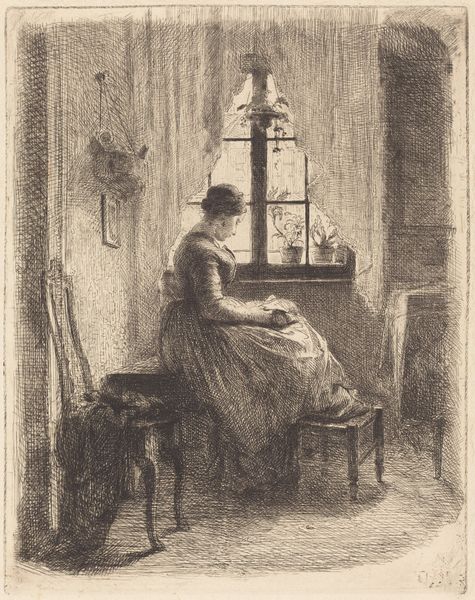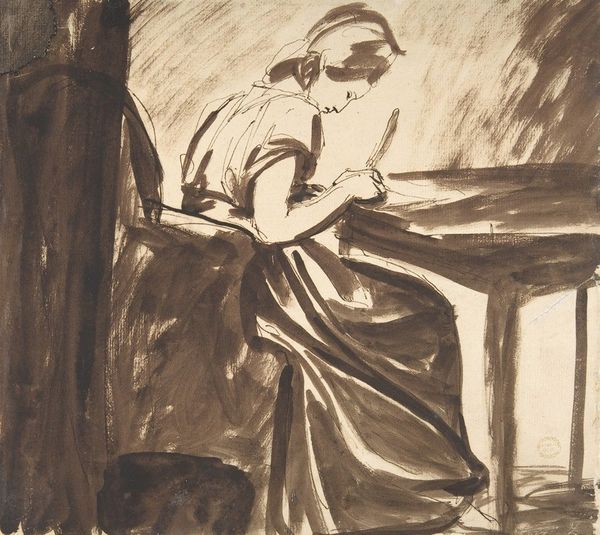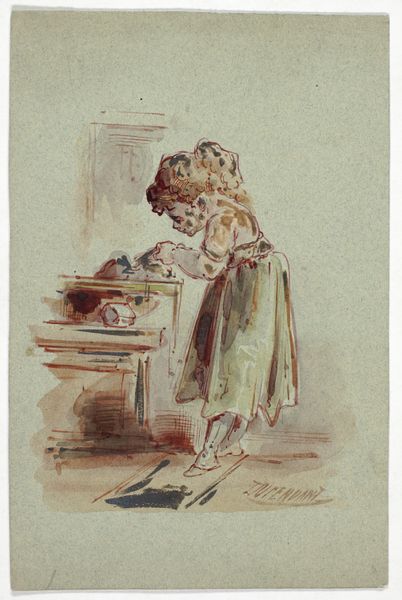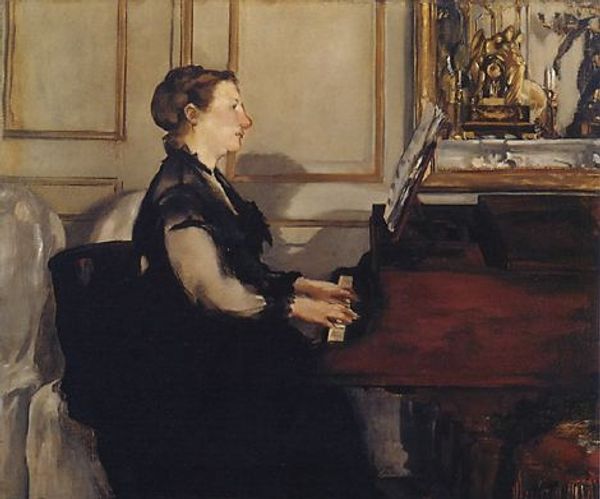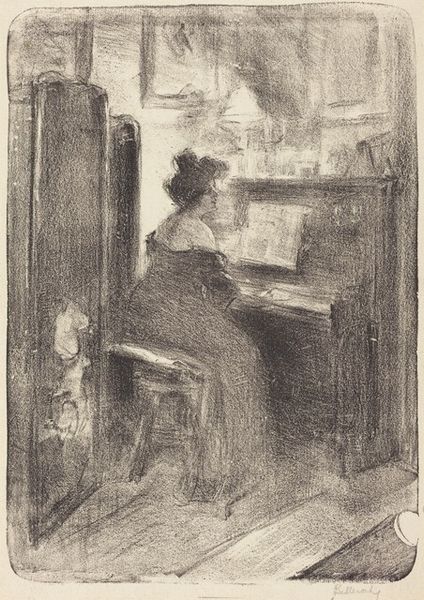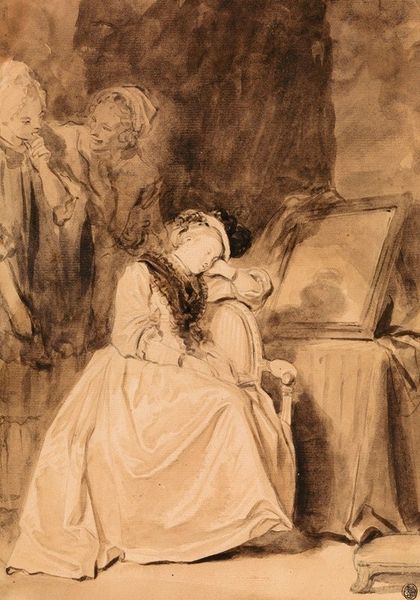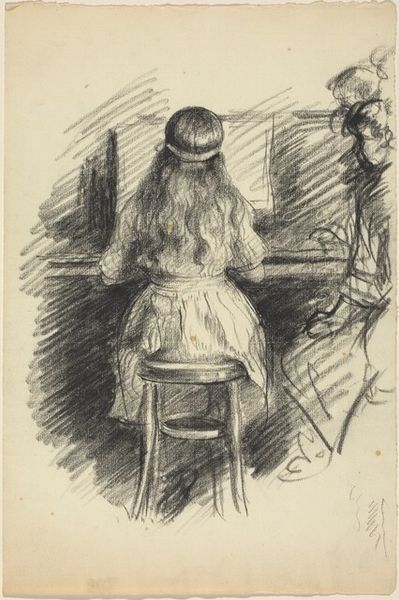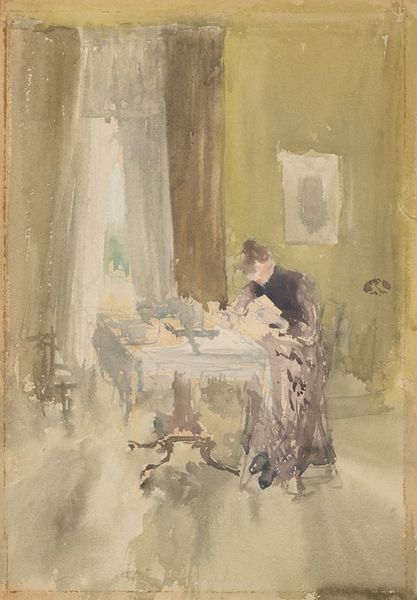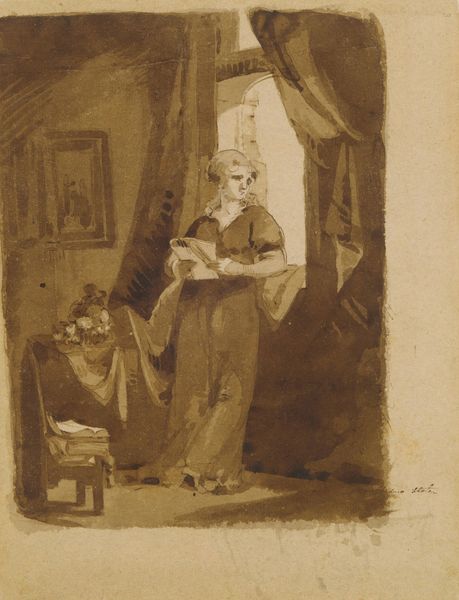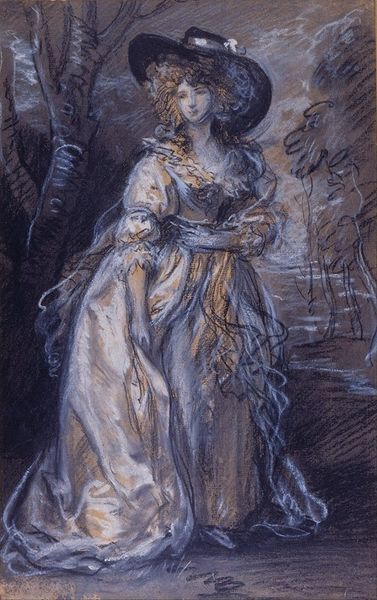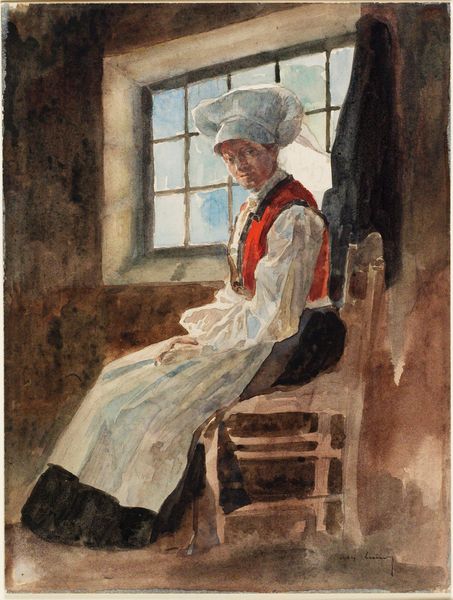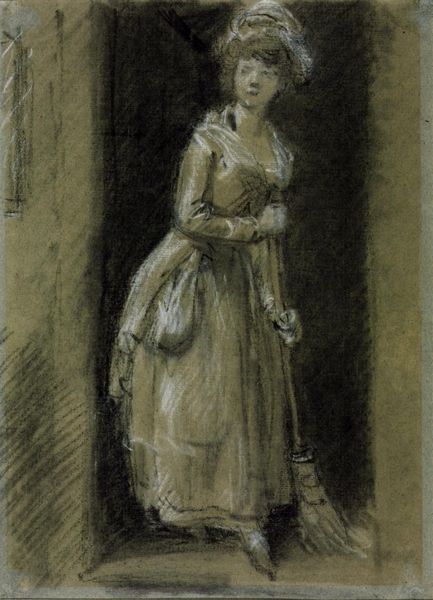
Copyright: Public domain
Editor: Here we have Paul Delaroche's "Countess Potocka Playing Piano," created around 1851, using ink and charcoal on paper. It has a very ephemeral quality to it, almost dreamlike. What compositional elements stand out to you? Curator: Immediately, it's the artist’s rendering of light and shadow which command our attention. Consider the stark contrast between the lit figure and the almost aggressively dark, formless shadows pooling behind her. Note how the lines are deliberately swift and somewhat crude, a feature that creates a kinetic feel, further intensifying the emotional impact. Editor: It feels unfinished, somehow, despite the level of detail in the Countess's hands on the piano. Was this a typical style? Curator: Delaroche’s sketch-like quality certainly aligns with aspects of Romanticism, but it's the *contrast* which intrigues me, specifically how light serves as the visual anchor, structuring our reading of the composition. What semiotic meaning is suggested by the artist allowing shadow to overwhelm? Does it overwhelm, or support the form of the figure? Editor: I see what you mean about the use of contrast structuring the work, it changes how the negative space interacts with the foreground. Initially, it seemed like the light source was artificial, like from the candles on the piano, but now the rendering reads more as a means of providing visual weight, keeping our focus. Curator: Exactly. Through such artistic means, we derive a clear view of Delaroche's intellectual exploration, transforming this sketch into an aesthetic phenomenon. Editor: It's interesting to see how an unfinished sketch allows us a glimpse into the artist’s technical decision-making and, maybe, artistic philosophy. Curator: Indeed. By analyzing form, shadow and technique, a more nuanced understanding emerges.
Comments
No comments
Be the first to comment and join the conversation on the ultimate creative platform.
